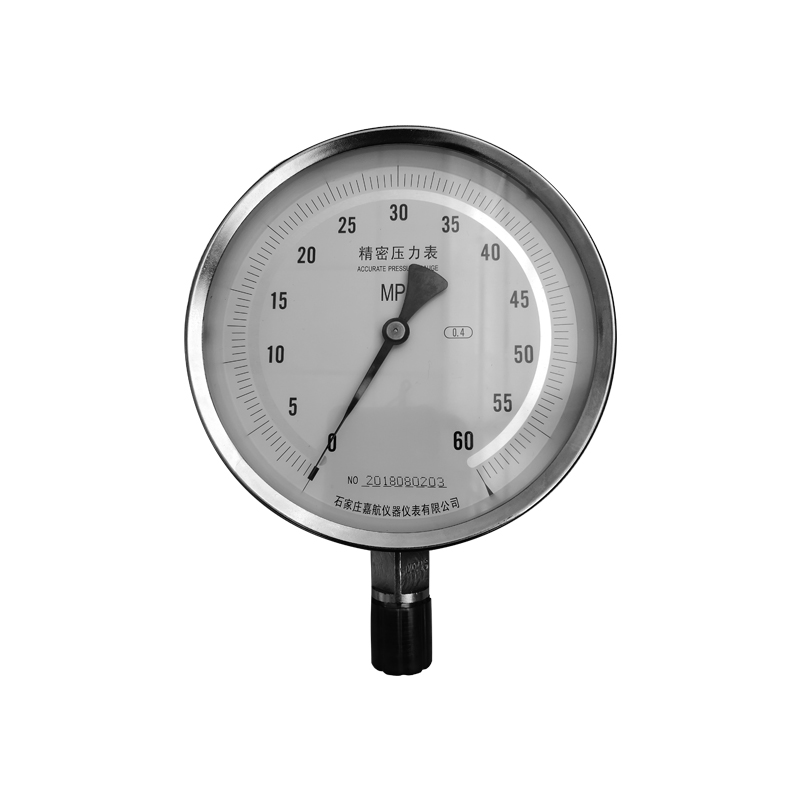
Dec . 04, 2024 11:46 Back to list
Flat Diaphragm Pressure Gauge Applications and Benefits in Measurement Precision
Understanding Flat Diaphragm Pressure Gauges Principles, Applications, and Benefits
Pressure measurement is a critical aspect in various industrial processes, scientific research, and everyday applications. One of the reliable tools used for this purpose is the flat diaphragm pressure gauge. This device plays a vital role in providing accurate and real-time pressure readings in a wide range of settings. In this article, we will explore the principles of flat diaphragm pressure gauges, their applications, and the benefits they offer to various industries.
Principles of Flat Diaphragm Pressure Gauges
Flat diaphragm pressure gauges operate based on the principle of pressure-induced deflection. The gauge consists of a flat, flexible diaphragm made from a suitable material that can withstand the pressure being measured. When pressure is applied to one side of the diaphragm, it causes the diaphragm to deflect. This deflection is then translated into a mechanical movement, typically through a linkage system, which drives a needle on a calibrated scale to indicate the pressure.
The deflection of the diaphragm is proportional to the amount of pressure exerted on it. As such, these gauges can provide precise readings over a wide range of pressures. The material and design of the diaphragm play crucial roles in determining the gauge's sensitivity, accuracy, and overall performance. Common materials used for diaphragms include stainless steel, brass, and various polymers, selected based on the specific application requirements such as corrosion resistance, temperature tolerance, and flexibility.
Applications of Flat Diaphragm Pressure Gauges
Flat diaphragm pressure gauges are incredibly versatile and find applications across numerous industries. Some key areas where these gauges are employed include
1. Oil and Gas Industry In this sector, accurate pressure readings are essential for monitoring drilling operations, pipeline integrity, and gas pressure in storage and transport. Flat diaphragm gauges are often used for wellhead pressure monitoring and flow measurement.
2. Chemical Processing The chemical industry relies on flat diaphragm pressure gauges to monitor and control pressure during reactions and distillation processes. The gauges’ ability to handle corrosive media without degradation makes them an ideal choice.
3. Water and Wastewater Management These gauges are commonly used to measure pressure in water distribution systems, wastewater treatment plants, and pumping stations. Ensuring proper pressure levels helps maintain system efficiency and prevent leaks.
4. HVAC Systems In heating, ventilation, and air conditioning (HVAC) systems, flat diaphragm pressure gauges are employed to measure air pressure in ducts and ensure optimal system performance.
flat diaphragm pressure gauge

5. Manufacturing Many production processes require precise pressure monitoring, whether it’s in hydraulic systems, pneumatic applications, or material processing. These gauges help maintain quality and safety in manufacturing operations.
Benefits of Flat Diaphragm Pressure Gauges
Flat diaphragm pressure gauges offer several advantages that make them a preferred choice for many applications
- High Accuracy These gauges are known for their precise pressure readings, enabling operators to monitor processes closely and make informed decisions.
- Durability The materials used in flat diaphragm gauges are often resistant to wear, corrosion, and high temperatures, enhancing their durability in harsh environments.
- Ease of Calibration Flat diaphragm pressure gauges can be easily calibrated, ensuring that they maintain their accuracy over time.
- Versatility With the ability to measure a wide range of pressures, from very low to very high levels, these gauges can be adapted to different types of processes and systems.
- Low Maintenance Once installed, flat diaphragm gauges require minimal maintenance, which helps reduce operational costs and downtime.
Conclusion
Flat diaphragm pressure gauges are essential instruments that provide accurate pressure measurements in various industries. Their unique design and operational principles make them highly effective in measuring pressure across a wide range of applications, from oil and gas to manufacturing. With their durability, high accuracy, and low maintenance requirements, these gauges continue to be invaluable tools for engineers and technicians, ensuring the efficiency and safety of numerous processes. As technology advances, we can expect further improvements in the design and functionality of flat diaphragm pressure gauges, solidifying their place in pressure measurement systems.
-
Digital Pressure Gauge RS Components for Semiconductor & Chip Industries
NewsMay.23,2025
-
Industrial Differential Pressure Gauges Global Supplier & Pricelist
NewsMay.23,2025
-
Bourdon-Type Differential Pressure Gauges High Accuracy & Affordable Pricing
NewsMay.22,2025
-
Vacuum Differential Pressure Gauges High-Precision Solutions & Quotes
NewsMay.22,2025
-
Durable Diaphragm Pressure Elements High Accuracy & Custom Quotes
NewsMay.22,2025
-
AG Precision Pressure Gauges High Accuracy & Global Exporters
NewsMay.21,2025
